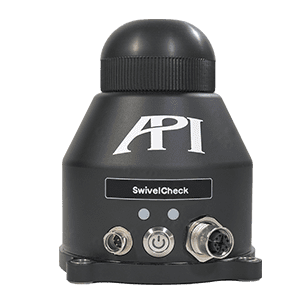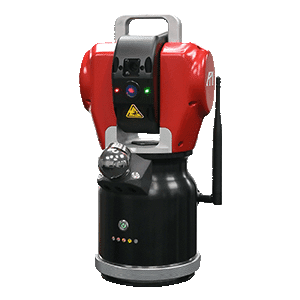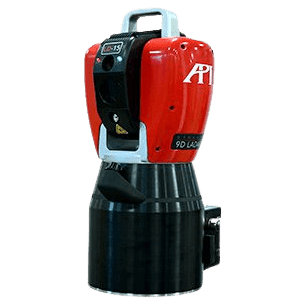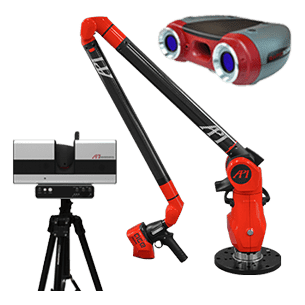Dr.Lau Q & A
1) Is there anything that surprises you about metrology technology today?
As far as the tech is concerned, I don’t think so. API is one of the companies that has set the technology trend. For instance, 10, 15 years ago, I anticipated non-contact measurement would be the future. Not a lot of people believed that, but we started looking into non-contact measuring solutions at that time. Right now, you look at it, we were totally right. Some 30 years ago, we believed the combination of the laser tracker technology and robot would change the landscape of manufacturing. And again, I think we were correct on that. Right now, we’re talking about AI and Automation.
I believed 30 years ago when I formed API, we’re a sensor technology company. From the manufacturing and engineering perspective, where does the data come from? Sensors. The laser tracker is a sensor. It senses what’s going on in the process. It senses the health of the part, whether it’s right or wrong. The laser tracker is a sensor to me. It’s so important so that big data engines can process and make decisions. The key data comes from sensors. Sensor technology is the key to manufacturing and metrology. The important thing is that you have the right data. And we build the sensors you need to get that data. So, API has always been quite a bit ahead in thinking, and I think that will continue.
2) What about API’s future excites you?
The same thing that excited me in the beginning of API, the excitement of new challenges, new solutions that our customers are looking for. That drives our creativity. It’s the same excitement from when I was building toys in Hong Kong. I love to build new toys, new ideas. And now the excitement is that a second generation will take over and continue these traditions. And our people are very excited too. They understand the message; they share the mission with me and our upper management. I will retire one day when they tell me, “Kam, your idea is too old.” That’s the sign that I should leave. And that’s the day, I’ll know the second generation is ready to completely take over API.
3) Where do you see the future of metrology going in the next 5 years? 10 Years?
I think in the next five years, it will be in the integration of the laser tracker into Automation, in the process of manufacturing. Trackers will no longer be a stand-alone metrology instrument, they will be integrated into the process, in the robotic systems, integrated with the inspection systems, integrated with the manufacturing systems. It’s integration. Providing the proper information to guide the process, to guide the robot, the inspection, the cutting tools. That’s what I see in the next five years. Laser trackers will merge with those processes along with 5G. 5G facilitating high speed communication without delay allows tracker information to be transmitted in real-time.
In the next 10 years, I think it will be construction. It may well go beyond that, but energy, construction, robotics are the ones I really see in the next 5-10 years with laser tracker technology.
4) Is the scanning Laser Tracker the future of the Laser Tracker?
Certainly, if you look at the tracker, it is semi-manual. Most likely, you would use a handheld target to do measurement. Moments ago, I was talking about integrating in the process of automation. The tracker combination with some kind of scanner for non-contact measurement is definitely the future.
5) What technology limitations must be addressed for Laser Trackers to adapt in the coming years?
Targets. There are some applications where you don’t want to target. Speed of communications and sending information to the accessories or to the central processing unit. 5G will help to address that. But I think that, even with these limitations, the tracker will continue to dominate the industry for the next 15-20 years.
6) What innovations do you see for API in the coming years beyond the Laser Tracker?
[Laughs] That’s top secret. But, believe me, yeah, we’re working on a few things. I’m sorry, I can’t share that with you or the public yet. Check back with me later.
7) As robotics and automation continue to expand their presence in manufacturing, how does API’s role in supporting these industries change?
We play a more significant role in the process. Our vision and innovation have created the very in-depth technologies that we have. Now, we’re working with our partners to integrate those technologies. It’s not just the laser tracker anymore; it’s the whole suite of accessories that we’ve also created, both hardware (Checkbox and SFIS) and software (RMS). And I can foresee API will be one of the leaders in working with customers to create a complete solution. I think that is happening right now.
8) What industry do you think is going to see the biggest change in their metrology needs over the next decade?
I think it would be in construction. In the precision of structural alignment, for one thing, but the other is for modular construction. A lot of the big parts are pre-made before they move to the site. Modular construction is where you can see the growth of measuring and laser tracking technology. Another part of it is in robotic construction.
And, of course, robotics will continue. The original purpose of the laser tracker was to measure the performance of the robot, how good or how bad they are. What’s the efficiency of the robot? More recently, what API has been trying to do is evolve the 6 DoF laser tracker in real time to provide real-time 6 DoF positioning of the robot, so that we can do a real-time 6 DoF end-point control of the robot, so the robot can do a more precise job, like manufacturing or inspection, that robots are not currently capable of. We think that could change the landscape in manufacturing and in inspection of large parts. A combination of API’s 6 DoF laser tracking along with robotic control that makes the robot able to do more precise work.
READ PART 1 HERE
READ PART 2 HERE
INTERESTED IN OUR METROLOGY PRODUCTS OR SERVICES? CONTACT US HERE.













